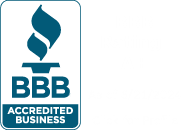Personal Donations (Goal: 60-70% of Revenue)
The primary method of raising funds for a 501c3 nonprofit organization is through personal donations. Initially, this may fall on the shoulders of the Board of Directors. While Charity Registrations are required to solicit funds, Board Members can always ask friends and family for donations. It is reasonable (and encouraged) to discuss your organization through your normal relationships and conversations.
Until the organization is established and credible, the board may be the only people who are passionate about sharing the vision. It is not uncommon for board members to make significant contributions to ensure an organization’s ongoing success. Some organizations even require board members to contribute financially to show their support for the mission.
Personal donations also come in the form of one-time and monthly gifts, potentially through the organization’s website or pledged at a special event.
Personal donations make up the majority of funds for an organization’s lifetime. While there are other types that we’ll cover next, public charities rely almost exclusively on individual donors who believe in its mission. Building relationships and asking for contributions is vital to the continued existence of the organization.
After filing a Charity Registration, nonprofit organizations can request personal donations through several means, including the website, social media, direct physical mail and email, special events, and more. When it comes to asking for donations, the only limiting factors are imagination and effort. Here are a few ways to generate personal donations every nonprofit should consider:
– Leverage Your Board: Remember, a quality Board of Directors brings resources to the organization. Those resources might include their personal ability to donate but may also include connections to willing donors. Make sure your board members are not shy to ask their friends, family, and coworkers for donations.
– Ask Your Circle: Think of everyone you know as a potential donor. You believe in your nonprofit’s mission enough to start an organization, so don’t be shy when it comes to asking for money. Think of it as an opportunity to share your vision with everyone you know and invite them to be part of the journey with you. While it is unreasonable to expect everyone you know to donate, they may support your mission by sharing your organization with their friends and coworkers.
– Get Social: Have a Facebook profile? Share about your organization. LinkedIn? Talk about the organization’s goals. Use social media to share about your nonprofit and link to your website or donation page. Some networks, like Facebook or GoFundMe, make it very simple to host fundraisers on the platform. While these are simple to set up, Facebook is notoriously slow to issue a check. Some organizations report waiting months before their donations appear. If you need the funds right away, it’s best to host a donation button on your website and share that on Facebook.
– Engage the Community: Does your community have a farmers market, town fair, or other community events? Consider registering as a participant to share your organization’s message with the public. Use your compelling branding and promotional materials to tell your organization’s story and ask for donations. These may result in one-time gifts or reoccurring monthly contributions.
– Host an Event: Many nonprofits host fundraising events ranging from a sit-down meal to a charity auction or casino night. While all of these take existing funds to pull off, they can drive large donations if the right people are invited. Again, leverage the board and your network of friends to ask. Make the event compelling, fun, and offer an opportunity for people to give.
There are a few specialized types of personal donations worth considering, depending on your organization’s needs:
Capital Fundraising
A capital campaign is a fundraising drive for a specific project. Nonprofits most often use capital campaigns to raise funds necessary to purchase, build, or renovate a building for use by the organization.
Sometimes a capital campaign establishes an endowment for future projects. In other cases, capital campaigns fund an extraordinary expenditure such as an expensive piece of equipment necessary for the organization’s operation.
A capital campaign employs all the usual means of raising funds, such as direct mail and direct solicitation, just on a larger scale. Capital campaigns require special preparation and skillful execution.
Charitable Trusts
In rare cases, a philanthropic individual may set up a charitable trust for the organization. These usually involve a large sum of money invested in trust, with annual disbursements providing operating revenue. Charitable Trusts require specialized legal and tax preparation and record keeping.
Planned Giving
Planned giving is a method some people use to support nonprofit organizations through their estates. A planned gift can provide tax advantages for the estate and heirs of the individual donating. Like Charitable Trusts, planned gifts require specialized tax preparation and record keeping.
Brytebridge Nonprofit Solutions
7021 University Blvd. Winter Park, FL 32792
1-877-857-9002
Monday – Friday EST 9 AM – 7 PM
https://brytebridge.com/


